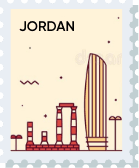The Rise of Vue.js: Exploring Factors Behind Its Popularity in VueJS Development Services

Quick Summary: The surge in Vue.js’s prominence can be attributed to a combination of factors that have significantly impacted VueJS web development services. As we navigate the landscape of web development, Vue.js emerges as a beacon of innovation, offering a progressive and versatile JavaScript framework. The exploration of Vue.js’s rise reveals its intuitive design, seamless integration capabilities, supportive community, and adaptability to varying project scopes.
Introduction
Vue.js is a progressive JavaScript framework for building user interfaces. Created by Evan You in 2014, Vue has quickly risen to become one of the most popular front-end frameworks.
Though not as old as alternatives like Angular or React, Vue’s growth has been remarkable. It went from obscurity in 2014 to the second-most-starred JavaScript framework on GitHub in just a few years. As of 2022, Vue has over 180,000 GitHub stars and over 5.4 million npm downloads per month, indicating a large and active user base.
So what is driving Vue’s rapid adoption? What sets it apart in an already crowded field of JavaScript frameworks? This article will explore the factors behind Vue’s popularity and shine a light on its fundamental strengths.
Vue’s Simplicity
One of the biggest factors behind Vue’s rising popularity is its simplicity. Vue is designed to be easy to learn and integrate, with a very lightweight core library focused purely on the view layer.
Unlike heavier frameworks like Angular and React, Vue has a gentle learning curve. New developers can start building basic applications very quickly, without massive amounts of configuration or boilerplate code. Even complex features like routing and state management have been designed to feel intuitive out of the box.
Vue’s simplicity also makes integration seamless. You can progressively add Vue into an existing project bit by bit, without the need for a full rewrite or re-architecture. Vue plays well with other libraries and frameworks, so you can easily mix and match the best tools for your needs.
The view layer focus keeps Vue’s core small at only 18kb minified + gzipped. This makes it one of the lightest frameworks available, with a very small bundle cost if included in an app. Vue is also modular by nature – you only have to include the features you need, not the kitchen sink.
Overall, Vue’s simplicity lowers the barrier to entry for new developers, while remaining flexible and lightweight for more complex applications. These factors have fueled its rapid adoption across projects of all sizes and scales.
Performance
Vue is extremely fast and efficient compared to other JavaScript frameworks due to its implementation of a virtual DOM. The virtual DOM allows Vue to minimize the number of costly DOM operations required to update the UI.
Instead of updating the real DOM directly, Vue does the work on a virtual representation of the DOM first. It then intelligently figures out the most efficient way to update the real DOM with the necessary changes. This diffing process achieves maximum optimization and minimum wasted effort.
Vue also makes use of efficient compilation and code-splitting techniques to minimize the amount of code shipped to the browser. First-load rendering times are extremely quick, and subsequent updates are handled gracefully.
Overall, Vue provides a fantastic out-of-the-box performance for most applications without requiring tricky optimizations. The virtual DOM combined with Vue’s reactivity system and component-based architecture enables it to achieve excellent rendering speeds and low memory usage. For many use cases, Vue meets or exceeds the performance of other popular frameworks.
Approachability
One of the main reasons for Vue’s popularity is its approachability. Vue was designed from the ground up to be incrementally adoptable, meaning developers can slowly introduce Vue into an existing project without needing to overhaul everything.
The learning curve for Vue is also quite gradual compared to other JavaScript frameworks. The core library focuses on the view layer only and is easy to pick up even for beginners. At the same time, Vue offers deep organization and tooling support when you’re ready for it.
Vue places a strong emphasis on approachable documentation and teaching resources. The [official docs](https://vuejs.org/v2/guide/) walk through everything in a beginner-friendly manner. There are also many high-quality video courses and tutorials available online.
The Vue community is also known for being friendly and welcoming. Experienced Vue developers are eager to help beginners on forums like the [Vue Forum](https://forum.vuejs.org/) and [Discord chat](https://discord.com/invite/vue). This creates a supportive environment for developers of all skill levels.
Overall, Vue’s gradual learning curve, excellent documentation, and helpful community make it one of the most approachable frameworks for web development today. These factors lower the barrier to entry and speed up the onboarding process for new Vue developers.
Flexibility
One of the key factors behind Vue’s rise in popularity is its flexibility. Vue can be used for a wide range of applications, from simple static sites to complex, dynamic web apps.
Unlike some frameworks that dictate a certain way of structuring applications, Vue is designed to be incrementally adaptable. This means it can be integrated into existing projects seamlessly, whether it’s adding some interactivity to a static site or gradually transitioning a jQuery codebase to a more maintainable Vue architecture.
Vue scales up nicely as well. When building larger, enterprise applications, Vue integrates well with other libraries and frameworks. For example, Vue can be used alongside Node.js for server-side rendering, GraphQL for data management, and NativeScript for mobile app development. The Vue core library focuses on the view layer only, making it easy to connect other technologies for additional functionality.
This high adaptability and ability to integrate is a key factor that appeals to many developers. Vue provides the flexibility to start small with simple use cases like form validation or UI components, while also scaling up for complex apps when necessary. The gradual learning curve combined with the ability to customize makes Vue a compelling choice for many projects.
Ecosystem
Vue has built up a robust ecosystem of plugins, tools, and support that makes it easy for developers to build complex applications.
Some key elements of the Vue ecosystem include:
Vue Router – The official router for building single-page applications with Vue. It deeply integrates with Vue and has features like nested route/view mapping, modular code organization, route params, query, and wildcards.
Vuex– Vuex is a state management pattern + library inspired by Flux and Redux. It serves as a centralized store for all components in an application and makes managing the state simple and intuitive.
Vue CLI – The official CLI for rapid Vue development with webpack setup, hot reloading, linting, testing, and production builds. Creating a new project with `vue-cli` scaffolds the project setup so developers can focus on building their app.
Vue DevTools– Allows inspection of component hierarchies in Chrome and Firefox. The dev tools provide information on components, performance metrics, debugging capabilities, and custom events.
-Nuxt.js– A framework for creating universal Vue applications with server-side rendering and generating static sites. It abstracts away a lot of web development complexity.
Support– Vue has good documentation, responsive core team support on forums like GitHub, and a thriving community contributing plugins, tools, tutorials, and more. This ecosystem makes it easier for developers to find solutions.
The rich ecosystem around Vue is a major factor behind its rising popularity. Vue provides the core view layer framework while the ecosystem provides battle-tested solutions for routing, state management, build tooling, server-side rendering, and more out-of-the-box.
Corporate Backing
One of the key factors behind Vue’s rise in popularity is its corporate backing from Chinese tech giant Alibaba and other major companies.
Alibaba began sponsoring and contributing to Vue starting in 2016, enabling creator Evan You to work on it full-time. This level of corporate sponsorship was a huge boost to Vue’s credibility and allowed faster improvements to the framework.
Having the resources and developers of a tech giant like Alibaba contributing to Vue enabled it to mature much faster. Features were added more rapidly and the documentation and ecosystem expanded.
The fact that Vue was being used in large production applications by a company like Alibaba demonstrated its stability and viability for complex web development. Many other companies followed their lead in adopting Vue.
This corporate backing from Alibaba and later other major companies like GitLab gave developers confidence that Vue was here to stay and would be supported long-term. It removed the risk of relying on an independent open-source project.
Vue’s popularity likely would not have risen so swiftly without this early and ongoing corporate sponsorship. The resources and credibility provided catapulted Vue’s adoption and enabled it to compete with established frameworks.
Comparison to React
React is currently more popular and widely used than Vue. However, Vue offers some advantages over React:
Pros of Vue vs React:
– Easier learning curve – Vue’s syntax and structure are simpler to understand for beginners compared to React’s JSX. Vue also provides official guides and documentation focused on being beginner-friendly.
– Faster render times – Vue achieves better optimization for re-rendering components than React, resulting in faster render times.
– Less code – Vue requires less code to build out the same functionality compared to React. Vue’s templates allow binding directives right in the markup.
– Better documentation – Vue’s documentation is very thorough and focuses on ease of learning. React’s documentation tends to assume existing knowledge.
– More flexibility – Vue offers both options of building using MVVM or a virtual DOM, while React is restricted to only using a virtual DOM.
Cons of Vue vs React:
– Smaller community – React’s community is much larger than Vue’s, which means more support resources and a talent pool.
– Less job opportunities – Due to React’s popularity, there are more job openings requiring React skills than Vue currently.
– View-only library – React is only a view layer, while Vue provides both a view layer and architectural tools like vue-router and vuex. However, many see React’s focus as an advantage.
– Fewer large-scale applications – React has been used in more large, complex web applications than Vue so far. But Vue has proven it can scale well too.
Overall, both are excellent frameworks with overlapping capabilities. For many use cases, Vue provides a simpler alternative to React with competitive performance. But React’s long-term momentum and vast ecosystem ensure its prominence for the foreseeable future.
Future Outlook for Vue.js
The future looks bright for Vue.js as it continues to gain popularity and market share. Here are some key areas to watch in terms of growth projections and expansion:
– Continued adoption at tech giants like Netflix, GitLab, Adobe, Nintendo and more. As these major companies use Vue more, it validates Vue as an enterprise-ready framework. This drives more adoption across all company sizes.
– Expansion in China and other parts of Asia. Vue already has a strong presence in China, where Alibaba uses it extensively. This growth in Asia is expected to continue as Vue builds momentum.
– An increasing number of developers learning and using Vue as their first framework instead of jQuery or others. This new generation of developers is leading to rapid uptake. Surveys show Vue passing React in developer growth.
– Improved native mobile development capabilities via frameworks like NativeScript-Vue and Vue Native. As Vue expands mobile support, it opens up entirely new categories of apps where it can thrive.
– Vue continues to spread across CMS platforms like WordPress and tools like Django and Rails. More integrations with popular frameworks broaden Vue’s reach significantly.
– Augmented reality, virtual reality, Internet of Things, and other emerging tech areas adopting Vue for its flexibility. Vue is well-suited for custom use cases, which are common with cutting-edge technologies.
Overall, Vue has built great momentum and its future looks very promising across many dimensions. As its ecosystem expands, Vue seems poised for even wider adoption and development.
Conclusion
The rise of Vue.js as a leading framework for VueJS development can be attributed to several key strengths working in tandem. Vue.js allows for incremental adoption, giving developers flexibility to integrate it into existing projects with ease. Its versatile nature means it can be used for a wide range of needs, from enhancing individual components to building full-fledged single-page applications.
Vue.js’s reactive architecture and component model help create dynamic and responsive user interfaces that elevate the user experience. Optimization for high performance, abundant documentation, and an engaged community further cement its reputation as a developer-friendly framework.
In summary, Vue.js owes its popularity to its adaptability, efficiency, and overall positive development experience. As its strengths become more widely recognized, Vue.js is positioned to play an influential role in shaping the web development landscape for years to come. Brain Inventory is a leading Vue.js development company that can help you build innovative, user-friendly interfaces if you are interested in this framework. Our experts can also advise you on whether Vue.js is the right choice for your next development project. If you have any questions or need project estimates, please contact us.

Have an idea?
Get in touch, we’d be
happy to hear from you
We are always looking out for new collaborations, whether you are a client who is passionate about a project or a talent who is interested in joining our team, our doors are always open.
locate us

India (HQ)
618, Shekhar Central, Palasia Square, A.B Road, Indore, Madhya Pradesh, 452001
+918109561401

United Kingdom
Brain Inventory, SBVS, 8 Roundhay Road, Leeds, UK, LS7 1AB
+18008209286

Canada
44 Main Street East Milton, ONCanada L9T 1N3
+4166696505

Jordan
185 Wasfi Al-Tal Street, Ammon Oasis Complex P.O Box 4724 Amman 11953 Jordan
+960770781000

USA
720 Seneca St Ste 107 Seattle, USA 98101
+1(206)6533419
if it's digital,we'll make it.
- Numetric - Online Accounting Software similar to QuickBooks
- Bloomia - Kegel exercise
- Virifi - Blockchain Powered Document Certification & Signing Platform
- Revolution Travel CRM - Custom CRM Built for Travel Agents
- Fatoura - Online Invoicing Platform
- My Fit Mantra - Your health partner
- Ocureel - Relation Building and video sharing Application